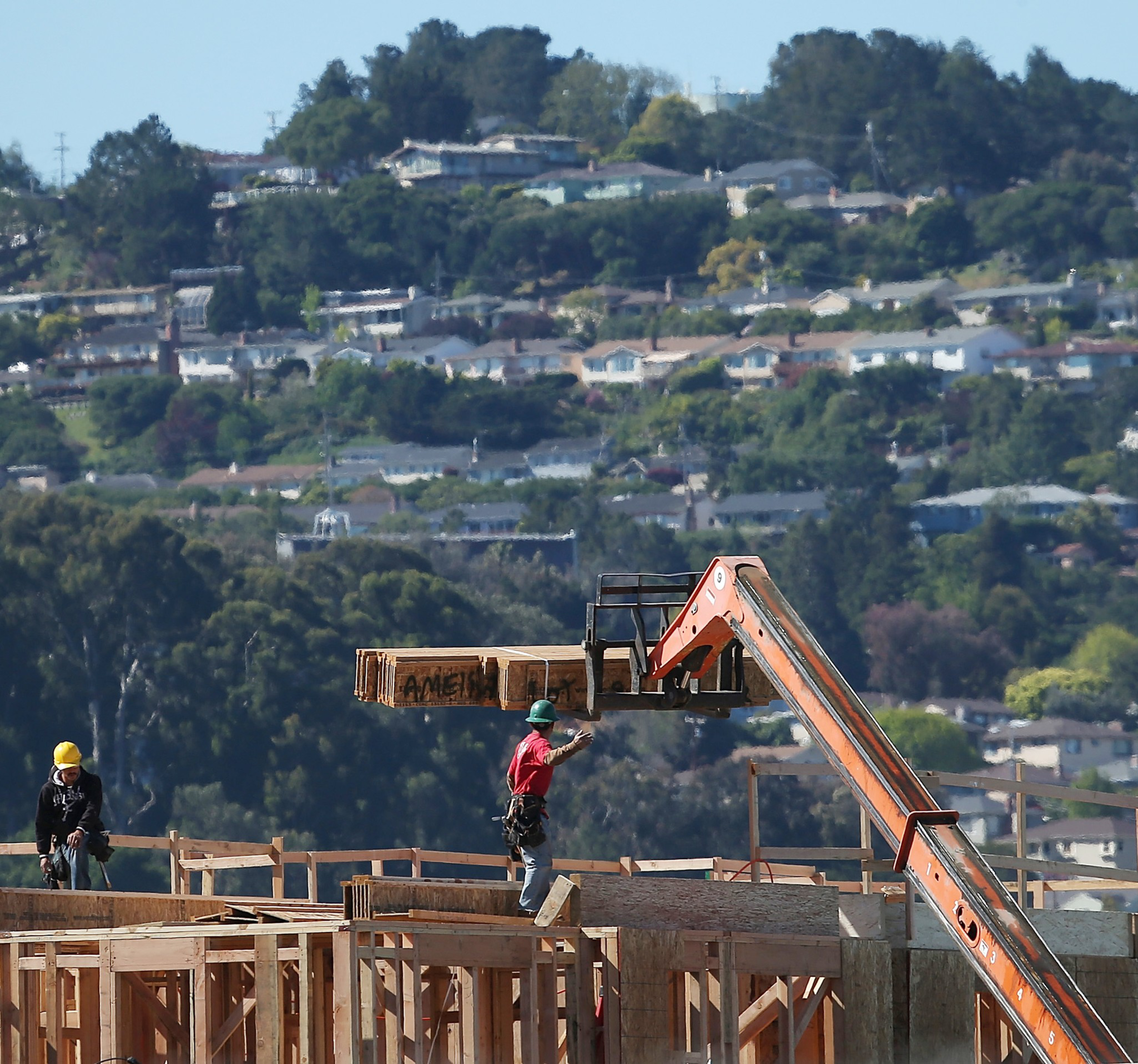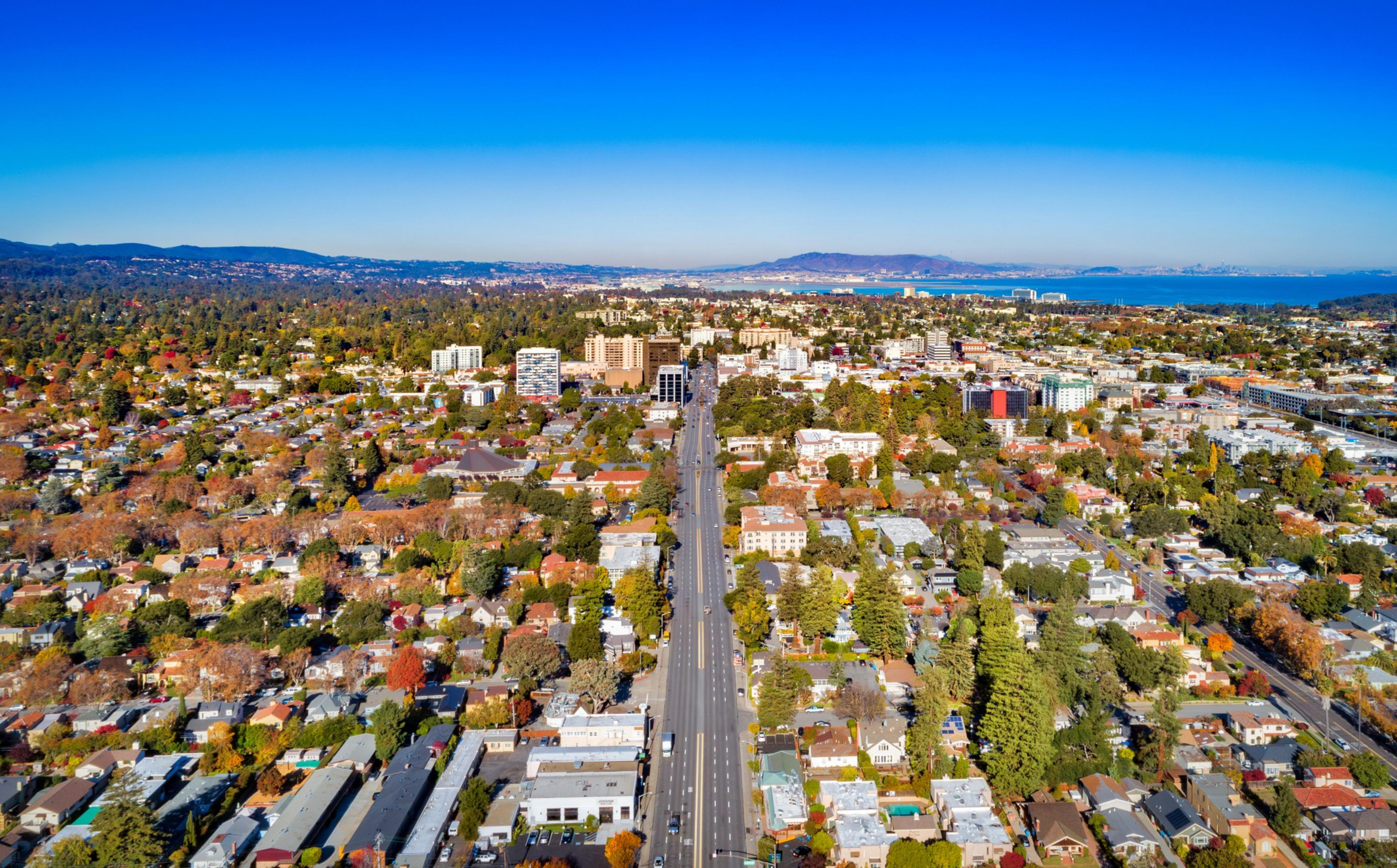With its proximity to major freeways and an expanding roster of restaurants and brand-name stores, San Mateo’s Bridgepointe Shopping Center isn’t likely to go anywhere anytime soon.
Yet, the city claims that most of the outdoor mall’s 12-acre parking lot could be redeveloped into hundreds of apartments over the next seven years.
San Mateo lists several sites like Bridgepointe that are still actively utilized by commercial tenants as critical parts of its latest housing element—a blueprint detailing how it will achieve its state-mandated housing goals. But despite skepticism from critics that those sites will transform into housing, elected officials voted last week to adopt the plan anyway.

Their celebration was short-lived. Less than 24 hours later, the city was sued in the San Mateo County Superior Court by a pro-housing activist group that accused San Mateo of skirting its duty to produce housing by forecasting construction in places that are not viable.
“Cities should not claim that sites are available for housing unless they actually have the evidence to back it up,” said Tom Mayhew of Farella Braun + Martel, an attorney for the plaintiffs, the San Francisco-based Housing Action Coalition (HAC).
This lawsuit (opens in new tab)—and similar actions taken across California—have opened a new legal front in the state’s increasingly contentious housing war.
Previously, state officials have used the threat of yanking local control of development to force cities to submit their housing plans on time. Now, YIMBYs are arguing that it’s time to take accountability one step further and ensure the devised plans can feasibly lead to new homes. If the state can’t enforce follow-through—the thinking goes—then maybe the courts can.
Style over substance
Fresh off working on an intense death row case in 2018, Mayhew turned his attention to the homelessness crisis and why so many Bay Area cities routinely fall short of their stated housing production goals.
In Santa Clara—which has a similar population to San Mateo—he found a list of parcels the city insisted new housing could be developed on. After investigating further, he discovered many were occupied by existing fire stations, shopping plazas and data centers, meaning they wouldn’t likely be redeveloped within the mandated period.

Mayhew approached HAC about taking this intensive lot-by-lot study to Bay Area cities as they started developing their upcoming plans, generally set to run between 2023 and 2031. Over the past two years, he has collaborated with the advocacy group to use evidence such as lease agreements, news coverage and deeds to persuade local governments to reconsider unrealistic housing sites.
“One of the first things you do before a lawsuit is you have to give them a chance to do the right thing,” Mayhew said.
Some Bay Area cities were more amenable than others during this process, according to Mayhew. In Santa Clara, city leaders considered the group’s comments in developing its current housing element.
However, Mayhew said his team met fierce opposition in San Mateo. The city rejected their findings and pressed ahead with the suspect sites, which it said could accommodate a portion of the 7,015 new homes it needs to make way for by 2031.
“I think they just wanted to barrel ahead and get state approval in hopes that it could protect them from the builder’s remedy,” Mayhew said, referring to a clause in state law that allows developers to circumvent local zoning laws where jurisdictions do not have an approved housing element.
The housing elements of both cities are currently under review by the state’s housing department.
HAC’s legal argument centers on a paragraph stashed deep within a state law signed into effect in 2017. Assembly Bill 1397, now codified as 65583.2(g)(2) (opens in new tab), says that cities can only list sites in their housing element that have realistic and demonstrated potential for redevelopment during the planning period.
In its lawsuit against San Mateo, Mayhew and HAC argue that this is an enforceable standard, meaning if city officials do not have sufficient proof that suspect sites, especially those still being used for other purposes, will likely be turned into housing within the planning period, they are required to devise a new, more viable plan or amend zoning laws to enable more construction.
The plaintiffs cite 11 other examples outside of the Bridgepointe Shopping Center in their lawsuit, alleging that San Mateo failed to analyze any existing leases or uses that would restrict what could be developed.
Other sites include an occupied three-story office building, a popular lodge still regularly used by an elite members-only club, and five downtown parking lots that service nearby medical offices and a school. In total, San Mateo is relying on those sites to support over 50% of 2,800 low-income units it is required to produce by 2031, the suit alleges.

Matt Gelfand, an attorney for Californians for Homeownership, a pro-development group associated with the California Association of Realtors, pioneered the novel legal strategy by filing lawsuits against several Southern California cities.
Gelfand explained that while the state has strong accountability measures on the books, the laws aren’t enforced unless someone forces the issue in the courts.
“We want to create an attitude shift within these cities,” Gelfand said. “Generally, they’ve been able to stay noncompliant without any real consequences.”
In Orange, a similar lawsuit was filed (opens in new tab) in February, alleging the city was relying on non-vacant sites, such as the parking lots at the Outlets at Orange mall, for over half of its lower-income housing goals.
In Beverly Hills, a Los Angeles County Superior Court judge ruled in favor (opens in new tab) of the plaintiffs in September, forcing the city to go back to the drawing board and restricting what it could approve in the interim. The city appealed (opens in new tab) that decision in December.
Community control
San Mateo officials say they worked with the public in good faith, across five rounds of public reviews, to adopt the city’s latest housing element. They argued that the sites listed in their plan are indeed viable.
“The ability to add new housing units on sites with large surface parking lots is a meaningful housing production opportunity in a built-out community like San Mateo,” said Community Development Department Director Zach Dahl. “Because they are close to transit and jobs, and are already served by infrastructure and utilities, these sites are the best locations to add density and housing while minimizing environmental impacts.”

Every eight years, cities like San Mateo submit an inventory of possible development sites to the state housing department to meet the housing needs of their population. Historically, these plans were mostly considered a bureaucratic exercise. But as the state’s housing crisis has gotten more dire in recent years, activists have been applying more scrutiny to the process.
San Mateo City Manager Alex Khojikian confirmed on Friday that his department had been served with the Housing Action Coalition lawsuit, but did not specify how the city would defend itself against the claims.
Khojikian pointed out that the city allotted enough land for 10,200 new homes, which exceeds its legal requirements. He added that the recently adopted housing element “reflects City Council’s priority for providing more housing to meet community needs.”
To meet those targets, city leaders are hoping voters will pass an amendment to Measure Y, which restricted the height and density of residential buildings when it was passed in 2020. The new ballot measure would increase those limits for developments near the city’s Caltrain station, Khojikian said.
But relying on voters is not a sound strategy to get housing developed, according to Ali Sapirman, the Peninsula and South Bay organizer of Housing Action Coalition.
“If San Mateo is serious about building housing, it is crucial the city identifies realistic sites now,” Sapirman said. “What cities need to do is simple, they need to follow the law.”
